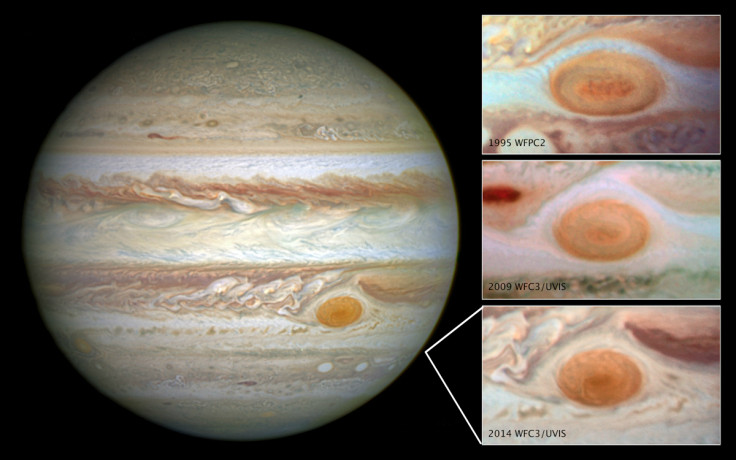Jupiter's Giant Red Spot 'Inexplicably Shrinking'

The Giant Red Spot on Jupiter – a swirling storm bigger than Earth – is shrinking and astronomers do not know why.
Nasa astronauts confirmed that the Giant Red Spot has now shrunk to its smallest size ever measured.
Amy Simon, from Nasa's Goddard Space Flight Centre, said recent observations from the Hubble Telescope show the Great Red Spot is now 10,250 miles (16,495km) across.
It has been shrinking since the 1930s but from 2012, amateur observations showed a notable increase in the rate at which the spot was shrinking – an average of 580 miles per year – and that its shape was changing from oval to circle.
In the late 1800s, the anti-cyclonic storm was as large as 25,500 miles on its long axis. In 1979, it measured 14,000 miles across.
Hubble observations from 1995 showed it had decreased to 13,020 miles, while a 2009 photo showed it was 11,130 miles across.
Simon said: "In our new observations it is apparent very small eddies are feeding into the storm. We hypothesised these may be responsible for the accelerated change by altering the internal dynamics and energy of the Great Red Spot."
Researchers plan to examine the motions on the edges of the storm as well as its internal dynamics to work out whether the swirls feed or sap momentum, resulting in the unexplained shrinkage.
© Copyright IBTimes 2025. All rights reserved.






















